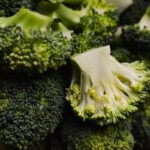The Ultimate Keto Beginner’s Guide: Everything You Need to Know
What is the Ketogenic Diet?
The ketogenic diet, or keto diet, is a low-carb, high-fat diet that shifts your body’s primary fuel source from glucose (sugar) to ketones, produced from fat breakdown. This metabolic state, known as ketosis, offers various potential health benefits, including weight loss, improved blood sugar control, and increased energy levels.
Understanding Macronutrients
The keto diet revolves around specific macronutrient ratios: typically 70-80% fat, 20-25% protein, and 5-10% carbohydrates. Understanding these ratios is crucial for achieving and maintaining ketosis. Focus on consuming healthy fats, moderate protein, and very low carbohydrates.
Foods to Eat on Keto
- Healthy Fats: Avocados, olive oil, coconut oil, nuts, seeds, and fatty fish.
- Protein: Meat, poultry, fish, eggs, and dairy products (in moderation).
- Low-Carb Vegetables: Leafy greens, broccoli, cauliflower, courgette, and peppers.
Foods to Avoid on Keto
- Sugary Foods: Sweets, fizzy drinks, fruit juice, and most processed foods.
- Grains: Bread, pasta, rice, and cereals.
- Starchy Vegetables: Potatoes, sweet potatoes, and corn.
- Most Fruits: While some berries are acceptable in small quantities, most fruits are too high in carbs.
Getting Started with Keto
- Plan Your Meals: Meal planning is essential for staying on track. Prepare grocery lists and plan your meals in advance.
- Read Food Labels: Pay close attention to carbohydrate content and serving sizes.
- Stay Hydrated: Drink plenty of water, especially during the initial adaptation phase.
- Electrolytes: Consider supplementing with electrolytes, as the keto diet can deplete them.
Tips for Success
- Be Patient: It takes time for your body to adapt to ketosis. Be patient and consistent.
- Find Support: Connect with others on the keto journey for motivation and support.
- Track Your Progress: Monitor your weight, measurements, and ketone levels to track your progress.
- Don’t Be Afraid to Experiment: Find what works best for you and adjust your approach as needed.
Common Keto Side Effects (and How to Manage Them)
- Keto Flu: Flu-like symptoms during the initial adaptation phase. Stay hydrated and replenish electrolytes.
- Constipation: Increase fibre intake and drink plenty of water.
- Leg Cramps: Ensure you’re getting enough magnesium and potassium.
